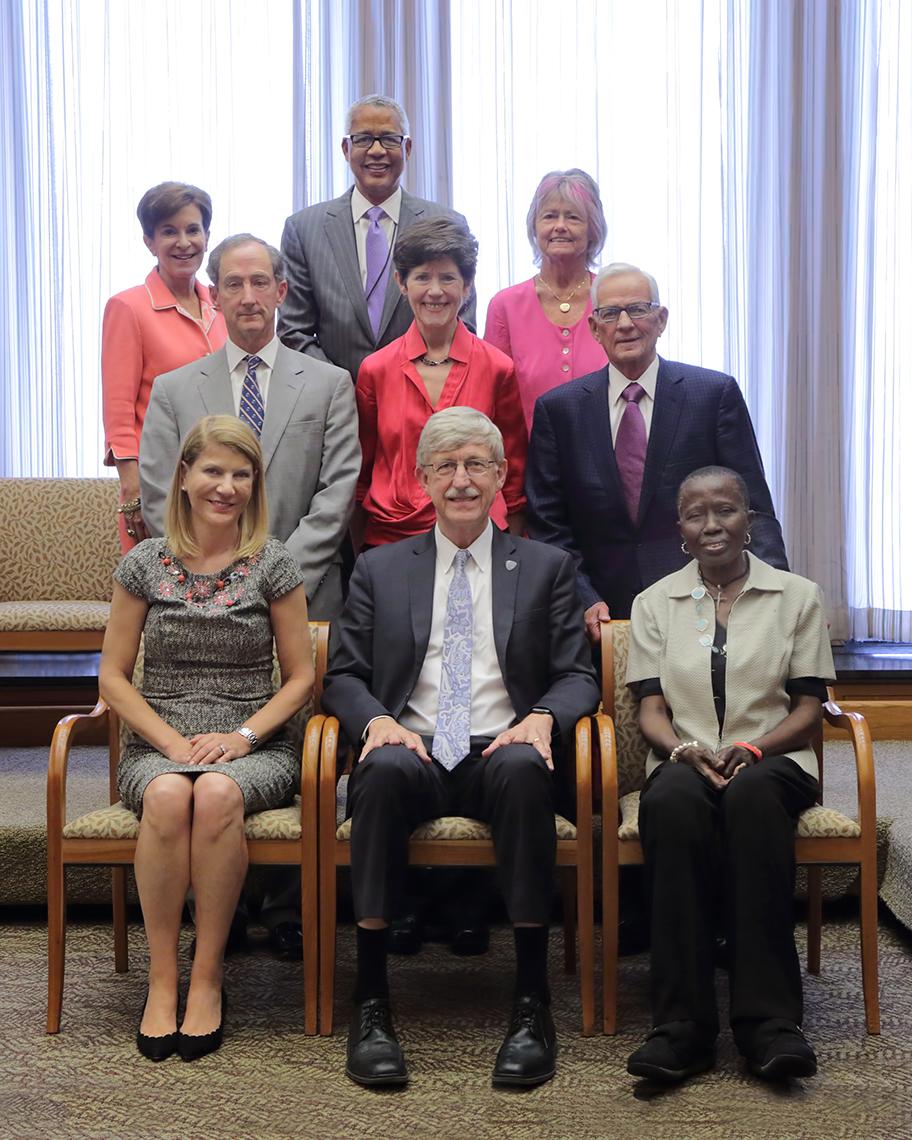CC Hospital Board Holds First Meeting
On July 15, the new NIH Clinical Center hospital board held its first day-long meeting to begin to define a path forward for the hospital. Planning for the future was to be based on the Red Team recommendations, and included an effort to hear directly about the experiences of physicians and caregivers who serve patients in the CC. The Red Team was originally formed to look at problems identified in the CC’s pharmaceutical development section (PDS). After that review, the team suggested the formation of the hospital board last April as part of 11 recommendations concerning hospital operations that were accepted by NIH director Dr. Francis Collins on Apr. 21.
At the inaugural meeting, everyone around the table agreed that perfection is a worthy goal, that no blame need be assigned and that a hospital whose governance was determined in the 1950s and 1960s is ripe for renovation. But there are many roads to perfection and a consensus will need to be reached as to the route.
The board, which meets quarterly, reports to Collins. He provided an overview of the CC’s 63 years of distinguished achievement, citing its “proud history of tackling the world’s public health problems,” including, most recently, Ebola virus and Zika virus infections.

Photo: Bill Branson
“Unquestionably, the NIH Clinical Center has done amazing work over these years and its value to the nation has been truly profound,” he said. “Our goal is to strengthen and enhance the Clinical Center’s already stellar reputation and role as a true national treasure.”
New board chair Dr. Laura Forese added, “There is not a hospital in the world that thinks ‘We’re happy and we’re going to stand still.’ If one goes around the country and looks at the practice of medicine, which I’ve done quite a bit, I dare say there is no perfect place. We’re here to help you pursue perfect.”
Board member Dr. Richard Shannon of the University of Virginia said, “The overwhelming majority of health care delivery systems in America are undergoing the very same introspection and review that we are partaking in here.” He said the complexity of human disease is increasing substantially and that upgrades are essential in the face of this reality.
“I don’t think that any of us want to have any part in finger-pointing, blame or pushing people into a defensive posture,” said board member Dr. Reed Tuckson, who recently concluded service on the advisory committee to the NIH director.
“We certainly welcome the opportunity to get better,” said CC director Dr. John Gallin, who has held that post for 22 years. “It’s not that we’re an unsafe hospital, it’s that we’re a place that we think can get better.”
Gallin said the CC budget, currently at around $420 million annually, has been hampered over the past dozen years by failure to keep up with inflation, resulting in a shortfall of roughly $46 million over that time. Add to that potential Red Team remediation costs estimated at $50 million, and “you could say that we’re $100 million from where we ought to be,” he said.
Dr. Henry Masur, chief of the CC’s critical care medicine department, said he and his fellow department heads think the problems uncovered in the PDS exemplify two concepts: “The institutes provide the CC with inadequate funds to deliver the services they expect for their research portfolios. And governance and decision-making would benefit from greater input from staff with recent clinical and hospital management experience.”
He added, “We think we provide superior care.” But there are outliers, he said, “where quality is not where we wish it would be. But that is not the culture, that is not what we condone, that is not what we encourage. We are proud of what we do and we want to make that eminently clear.”
“The board is not here to push people to implement the Red Team’s suggestions,” said Forese. “I think we’re going to learn a lot—all of American medicine is. This is going to be hard, but it’s going to be worth it.”
The board’s public session is archived at https://videocast.nih.gov/summary.asp?Live=19412&bhcp=1.
